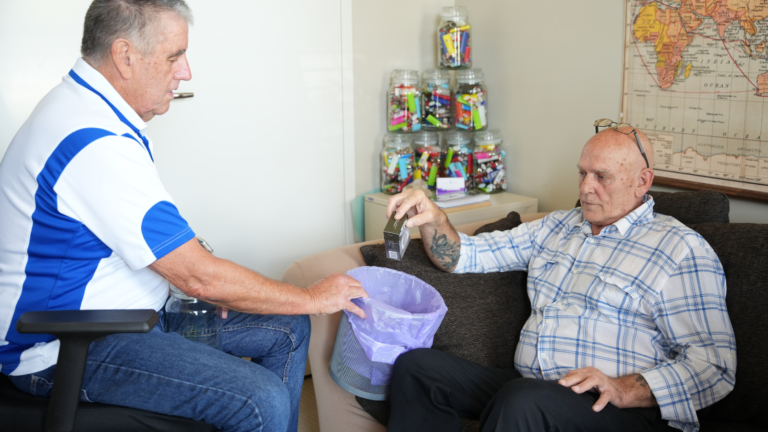Welcome to a path of transformation and healing.
As an experienced hypnotherapist, I’ve dedicated over four decades to guiding individuals through the healing power of hypnotherapy, especially for those grappling with traumatic memories.
If you’ve been searching for relief and haven’t found success with other methods, hypnosis might be the key. Let’s embark on a detailed guide on using hypnosis for healing traumatic memories.
Understanding Traumatic Memories
Traumatic memories are far more than unpleasant recollections; they are deeply ingrained, often intrusive, and can significantly disrupt your life.
These memories can manifest in various forms, including anxiety, phobias, and physical symptoms. Recognizing and understanding these memories is the first crucial step toward healing.
Finding the Right Hypnotherapist
The journey begins with choosing a qualified hypnotherapist experienced in trauma and memory work. It’s essential to have a therapist who can provide a safe, supportive environment, conducive to your healing journey.
Step 1: Seek a Professional Hypnotherapist
Finding the right hypnotherapist is vital. You need someone who is not only qualified but also empathetic and experienced in dealing with trauma.
This step involves researching, seeking referrals, and possibly having preliminary discussions with potential therapists to ensure the right fit.
Step 2: Establishing Trust and Rapport
Our initial sessions are dedicated to building a strong foundation of trust and rapport. Feeling safe and comfortable is paramount as we explore sensitive areas of your past.
We discuss your goals, what you hope to achieve, and any apprehensions you might have about hypnotherapy.
Step 3: Induction and Deepening
Entering a state of hypnosis begins with induction—a process that guides you into deep relaxation and heightened focus. This trance-like state is crucial as it allows you to access and process traumatic memories without usual defence mechanisms.
Step 4: Addressing the Trauma
In this state of relaxation, we gently revisit the traumatic memories. This step is not about reliving the trauma but about observing it from a safe vantage point, enabling you to process and understand these events without overwhelming emotional responses.
Step 5: Reframing and Healing
As you confront these memories, we work on reframing your perspective. This crucial step helps detach the pain and fear associated with the memories, transforming how they impact your life.
We use various techniques to alter the emotional charge of these recollections, making them less intrusive and more manageable.
Step 6: Post-Hypnotic Suggestions
We introduce positive, empowering post-hypnotic suggestions that your subconscious can absorb. These suggestions are crafted to reinforce your healing journey, building resilience and altering your response to the traumatic memories.
Step 7: Integration and Reflection
Post-session, there’s a period for integration and reflection. This time allows your mind to process the changes. You may notice shifts in feelings, thoughts, and reactions related to the traumatic memories—a sign of healing and transformation.
Step 8: Ongoing Support and Sessions
Healing from trauma is an ongoing process. We schedule follow-up sessions to solidify the positive changes and address new layers of trauma that may surface. The number of sessions varies, tailored to your individual needs and the depth of your trauma.
Understanding the Healing Process
It’s important to understand the healing process in hypnotherapy. We delve into how the mind stores and processes traumatic memories and how hypnotherapy can alter these processes.
We discuss the role of the subconscious in maintaining traumatic responses and how we can reprogram it for healing and resilience.
The Role of Relaxation and Visualization
Relaxation and visualization are key components of hypnotherapy. We explore various relaxation techniques and how visualization can be used to create new, empowering mental images, replacing traumatic recollections with positive, healing ones.
Addressing Common Concerns and Misconceptions
Many people have concerns or misconceptions about hypnotherapy. We address these, ensuring you have a clear understanding of the process, its safety, and its efficacy. We discuss the myths surrounding hypnotherapy and provide factual information to ease any apprehensions.
Personalizing the Hypnotherapy Experience
Every individual’s experience with trauma is unique, and so is their healing journey. We emphasize the importance of a personalized approach in hypnotherapy, tailoring each session to your specific needs, experiences, and goals.
Conclusion
Using hypnosis to heal traumatic memories is a journey of empowerment and transformation. This gentle yet effective approach can provide relief and a path to reclaiming your life.
If you’ve felt weighed down by memories that hinder your happiness and peace, hypnosis offers a path towards liberation. Remember, the past doesn’t have to define your present or future.
With hypnotherapy, you have the opportunity to rewrite your story, transform pain into power, and emerge stronger.
If you’re ready to take this step towards healing and transformation, reach out. Let’s start your journey to healing together.




